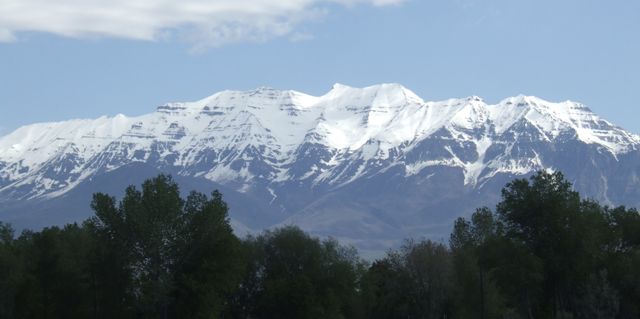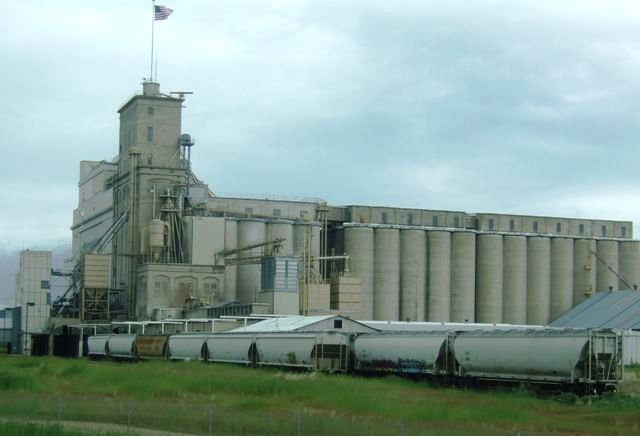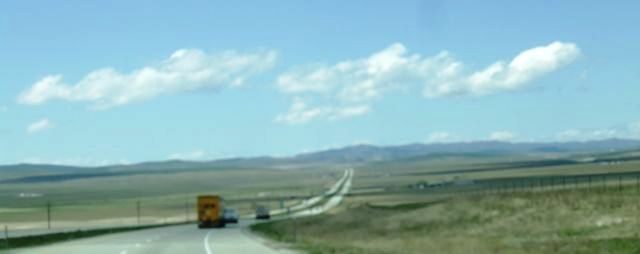 | Most established
campsites have some shade often from mature trees. This was a particularly
attractive specimen at the Lakeside campsite at Provo. |
|
As we turned out from the campsite there were beautiful views of the
mountains which extend all along the east side of the Great Salt Lake area. |  |
 | This is the commercial
centre of Salt Lake City. This part is much like any other mid sized US
city. |
| The bit which makes it
different is the LDS temple complex just to the north. |  |
 |
No we haven't got a fetish about grain silos. This is Deseret Mills which
is owned, as many things are around here, by the Church of Latter Day Saints
(The Mormons). |
| Further north around
Brigham City is Hill air force base which is home to an extensive museum. We
missed it this time but will visit if we ever pass this way again. |  |
 |
As part of the same complex is Tooele Army base where we found several
locomotives and wagons for transporting ammunition. This (poor) photo is of
GG20Biv 2000hp Green Goat locomotive USAX 6004 which was originally built
for the Canadian Pacific railroad. |
| Another grain silo, much
larger than the last. We are really heading towards the arable prairie, the
grain basket of North America. |  |
 |
We are on a plain at .about 4000ft but the mountains are much higher. There
must be some local conditions here which result in the formation of clouds
at the base of this mountain. |
| Triple trailers are
permitted in many of the western states. A lot are owned by the parcels
companies. They are quite common west of the Mississippi River. |  |
 |
But as we head north from Utah towards southern Idaho it gets emptier again.
There is basically nothing between the Salt Lake City area and Boise. |
| We expected to see
potatoes but it seems to be mainly grain here - where anything is grown at
all. |  |
 |
Idaho is the 44th state in population terms with only 6 people
per square km. By comparison the UK has 383 and Charente-Maritime has 88. |
| There is a lot of
irrigation here. We have read about problems with the degree of irrigation
here and its impact upon the water table. |  |
 | Mostly it is just a flat barren space much like we saw in Kansas. |
|